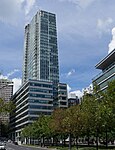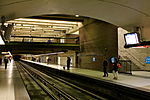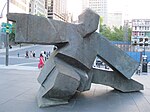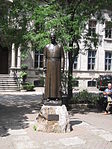Bell Telephone Building (Montreal)
1929 establishments in QuebecBell CanadaDowntown MontrealEmporis template using building IDHeadquarters in Canada ... and 5 more
Landmarks in MontrealNeoclassical architecture in CanadaOffice buildings completed in 1929Skyscraper office buildings in CanadaSkyscrapers in Montreal

The Bell Telephone Building (French: Édifice Bell) is a neoclassical office building in Montreal, Quebec, Canada. It was constructed with a steel frame between 1927 and 1929. It has 22 floors and is 96 m (315 ft) tall. It once contained the head office for the Bell Telephone Company. The Bell Telephone Building has 237,782 sq ft (22,090.7 m2) of class B office space. It was renovated in 1980.
Excerpt from the Wikipedia article Bell Telephone Building (Montreal) (License: CC BY-SA 3.0, Authors, Images).Bell Telephone Building (Montreal)
Côte du Beaver Hall, Montreal Ville-Marie
Geographical coordinates (GPS) Address Nearby Places Show on map
Geographical coordinates (GPS)
| Latitude | Longitude |
|---|---|
| N 45.502273 ° | E -73.564502 ° |
Address
Côte du Beaver Hall 1047
H3B 5M2 Montreal, Ville-Marie
Quebec, Canada
Open on Google Maps










